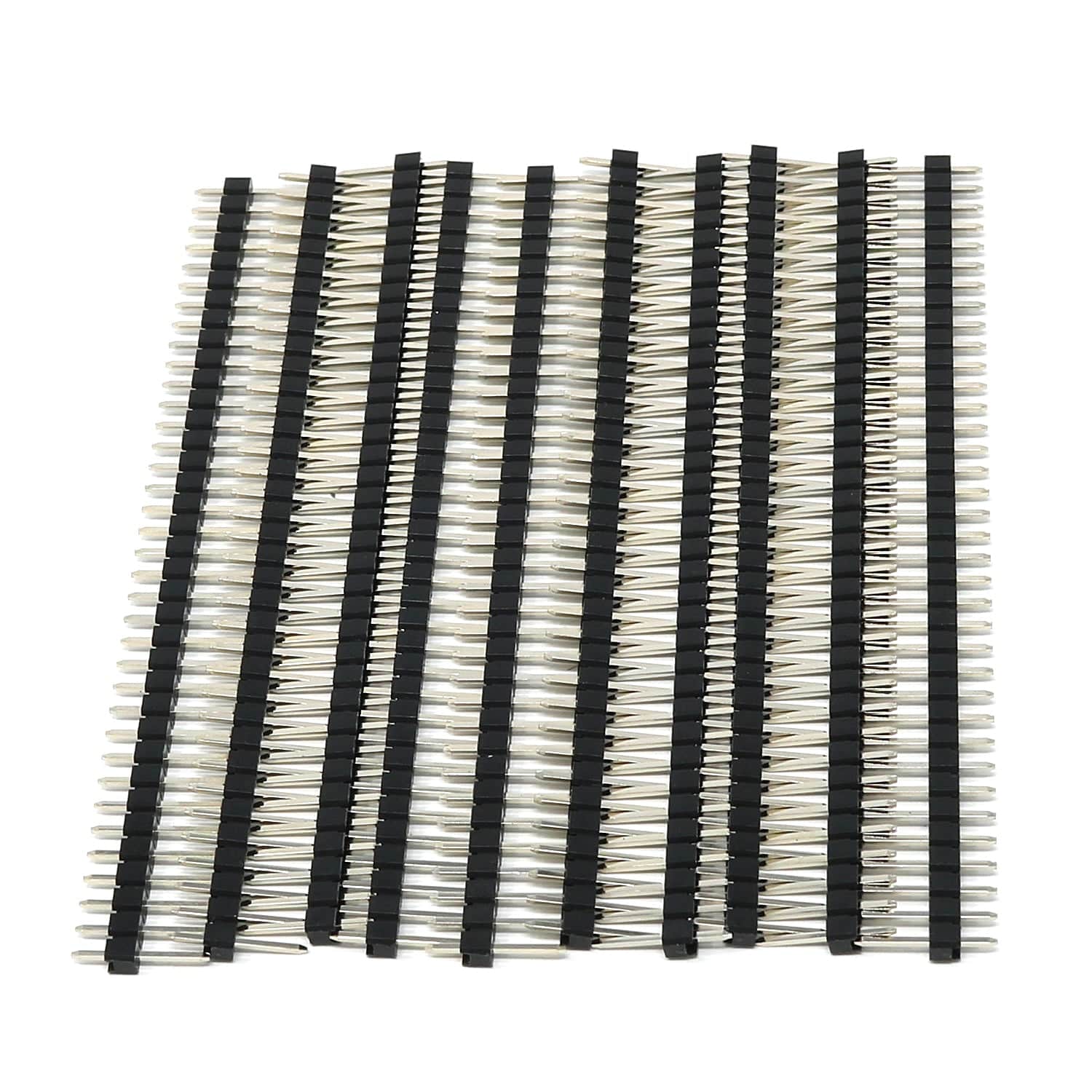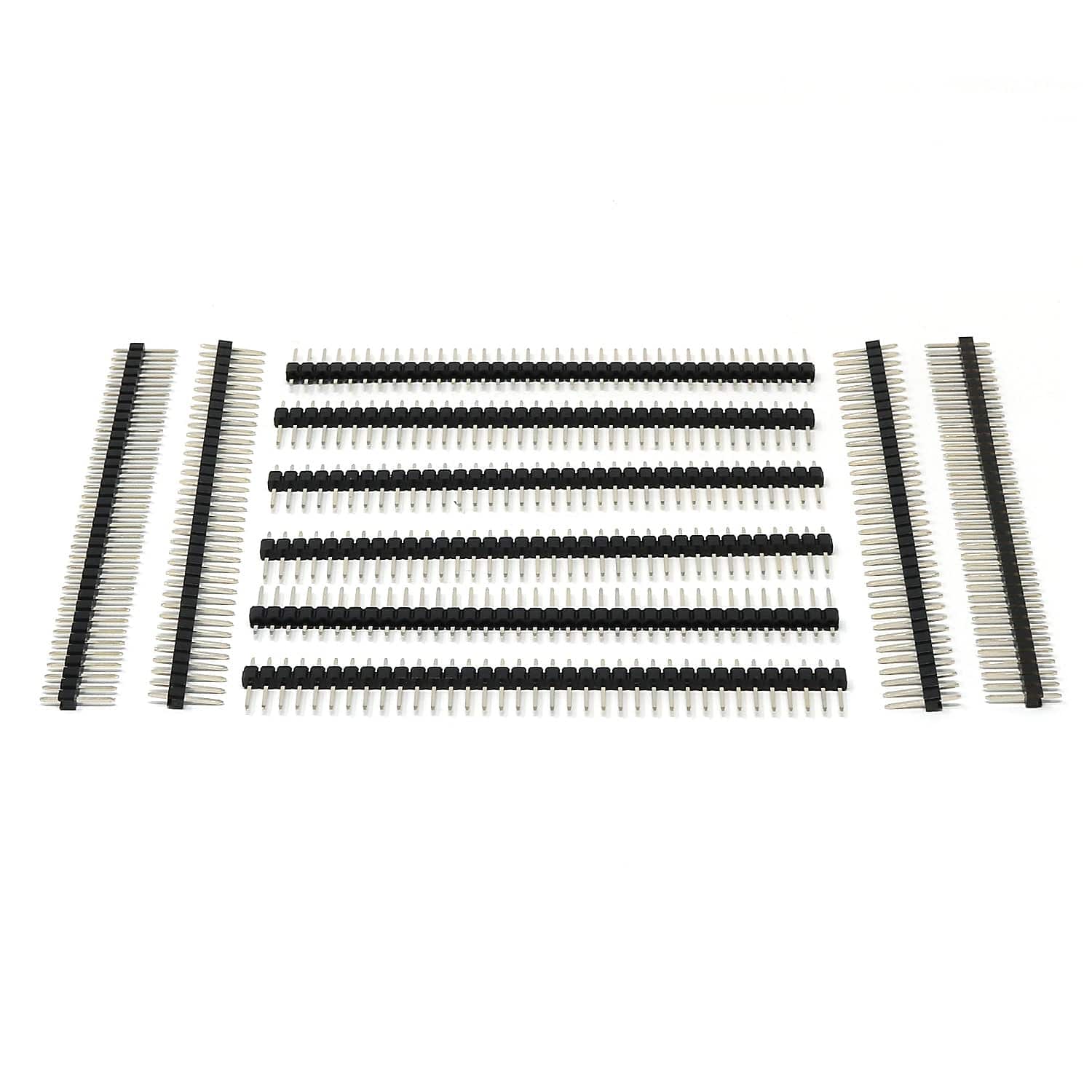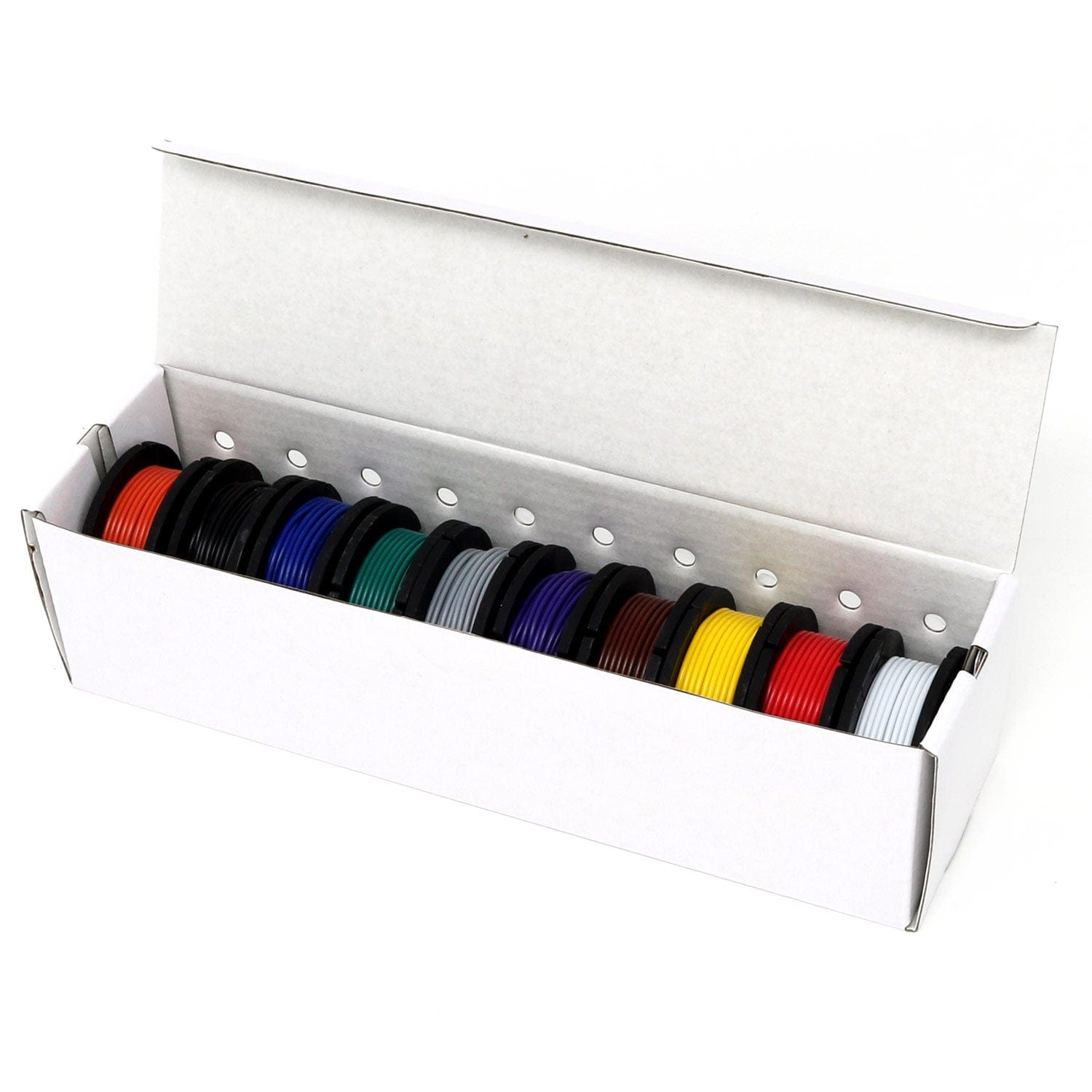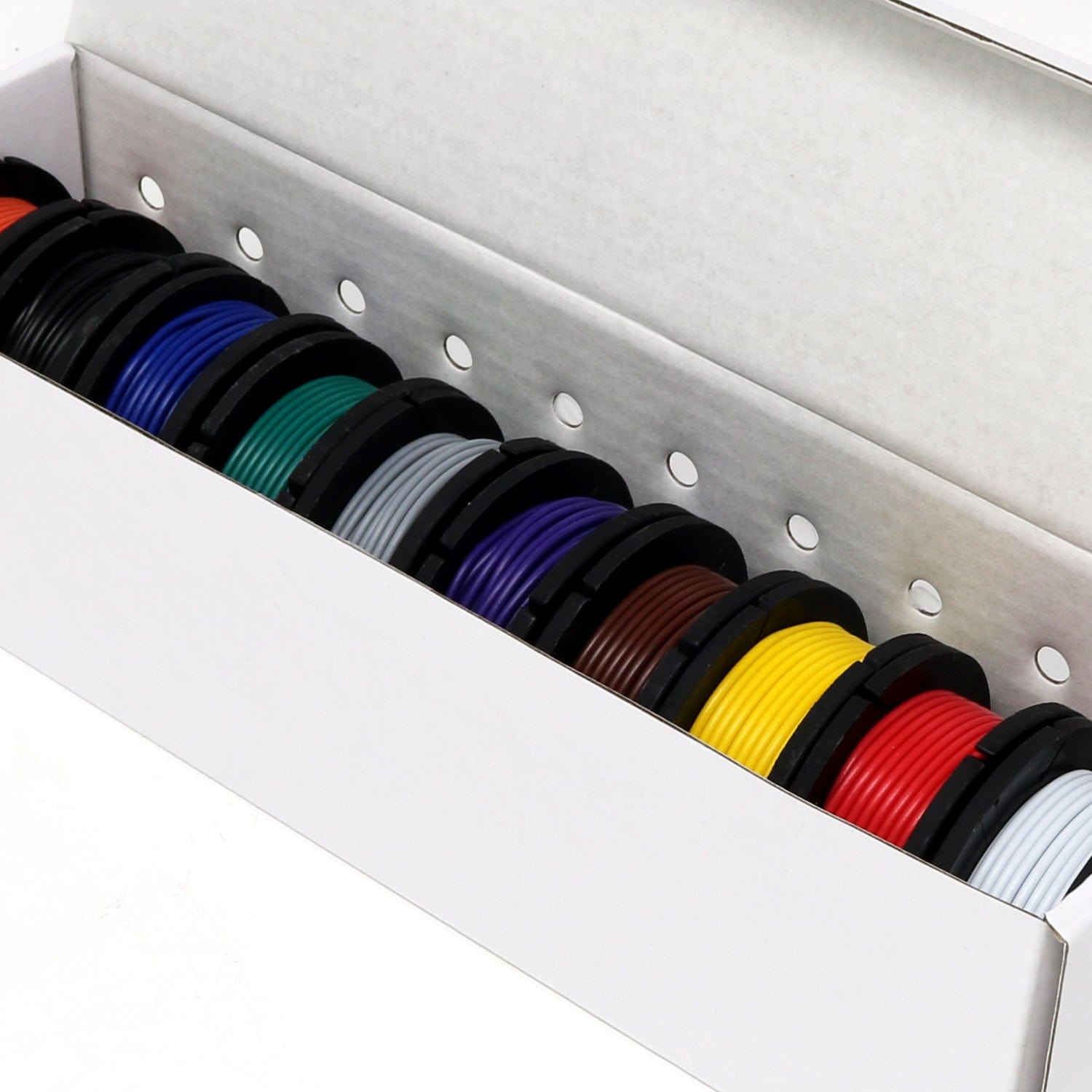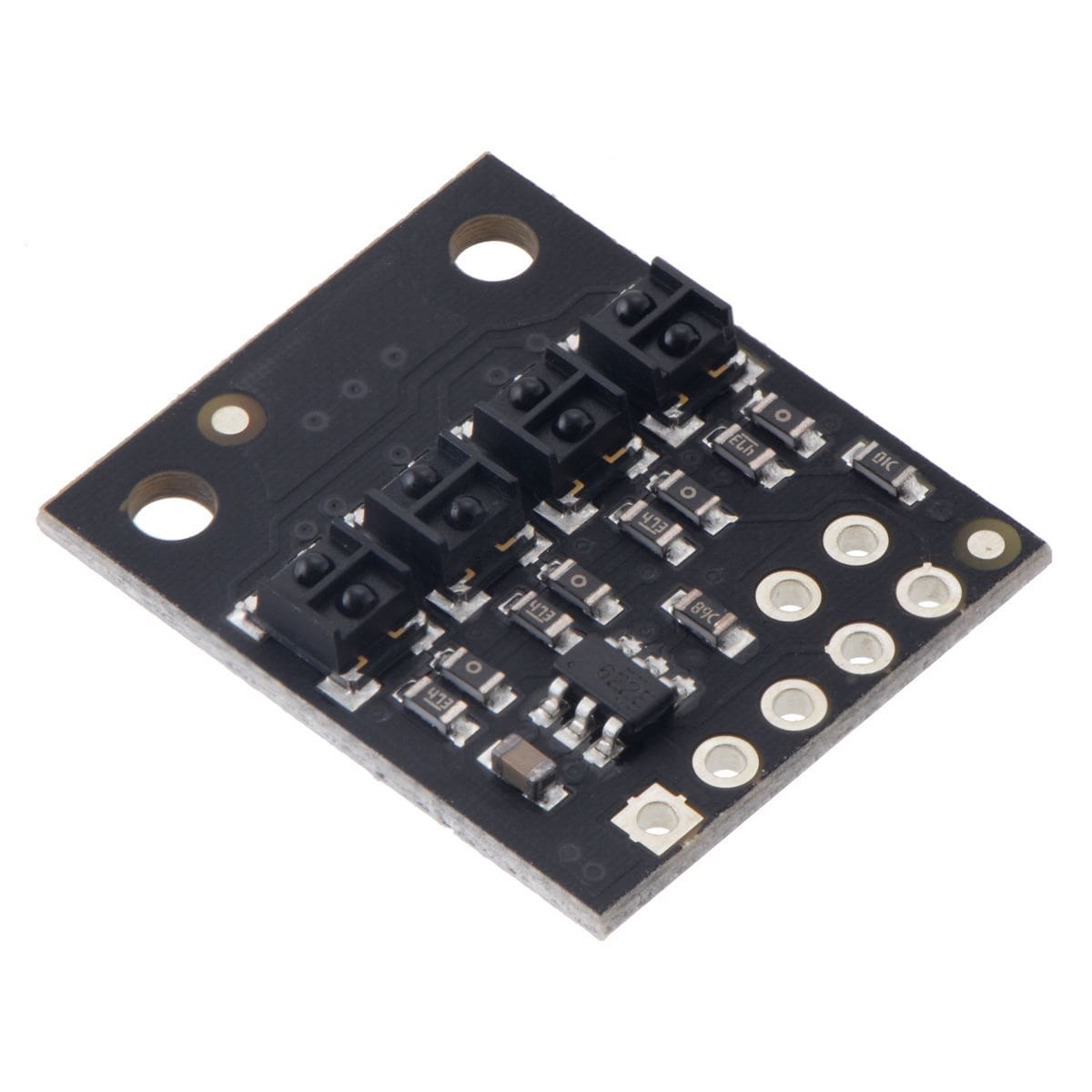
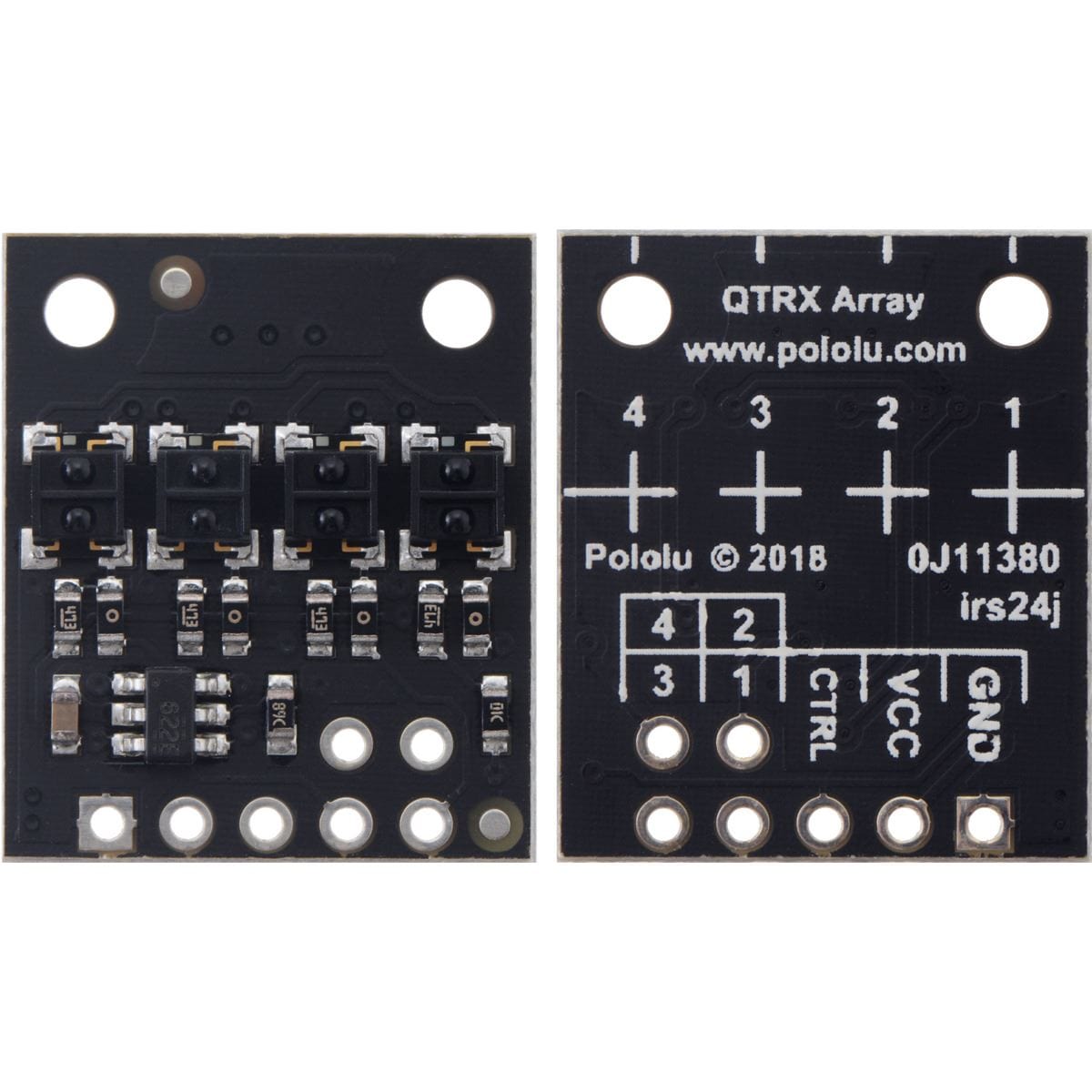
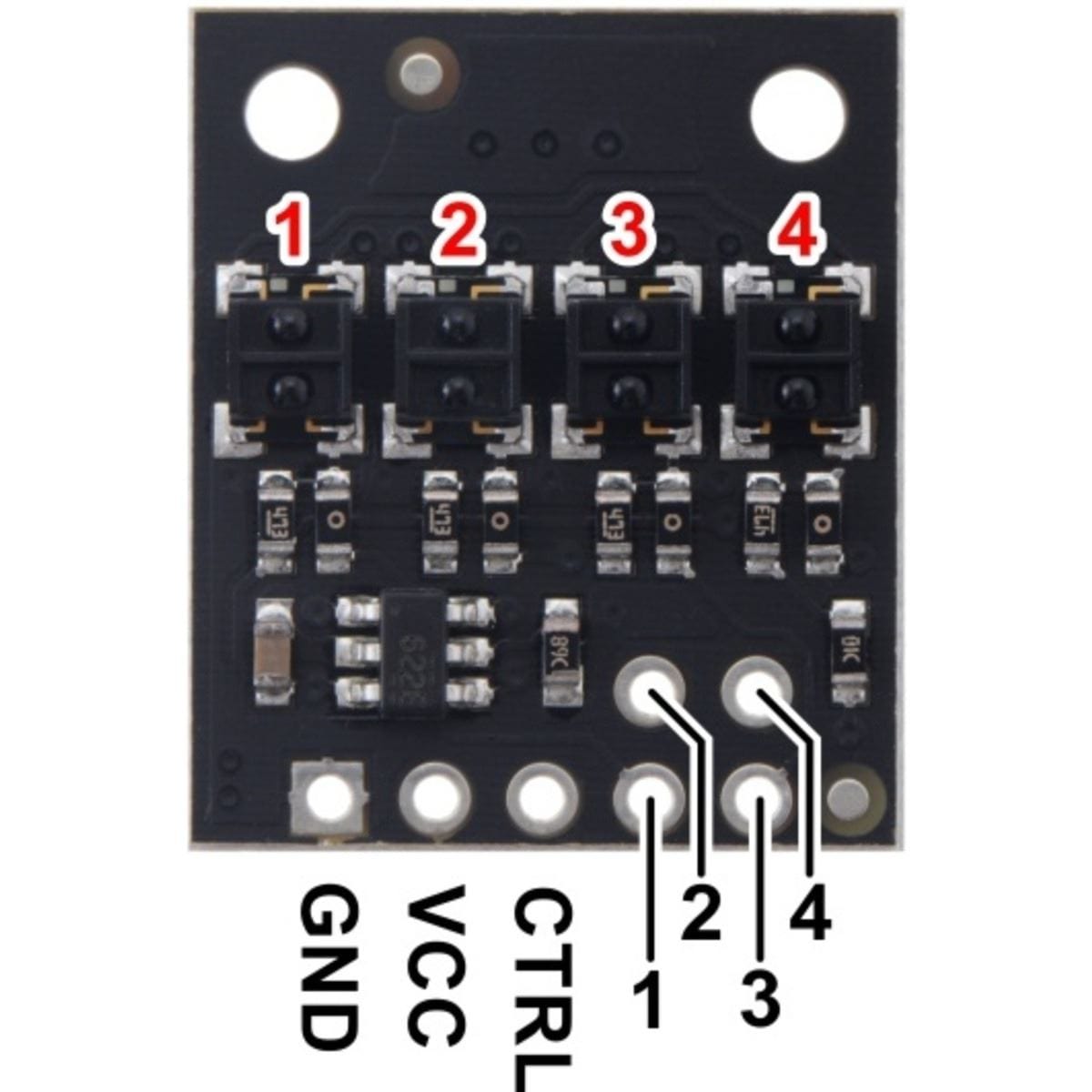
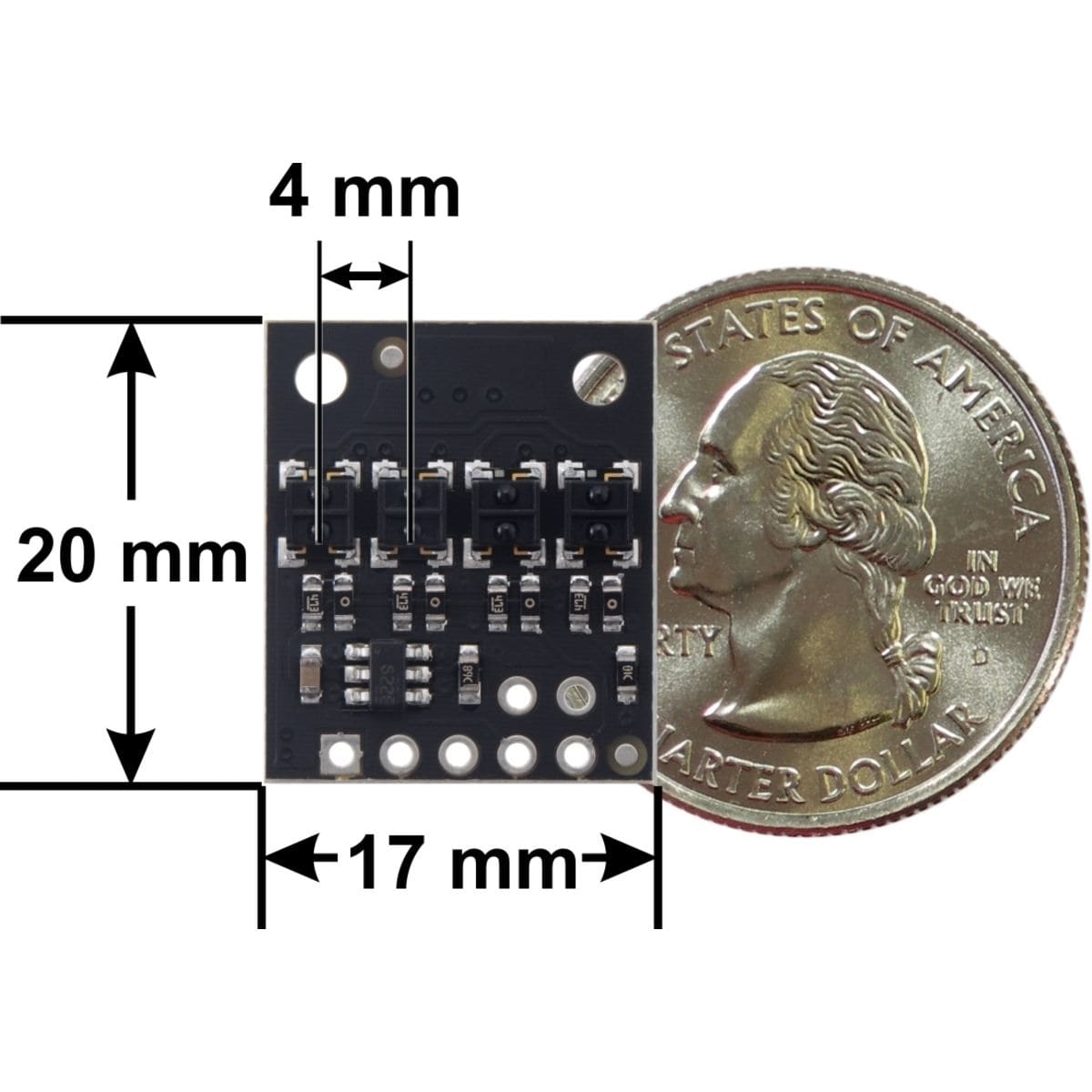
Login / Signup
Cart
Your cart is empty
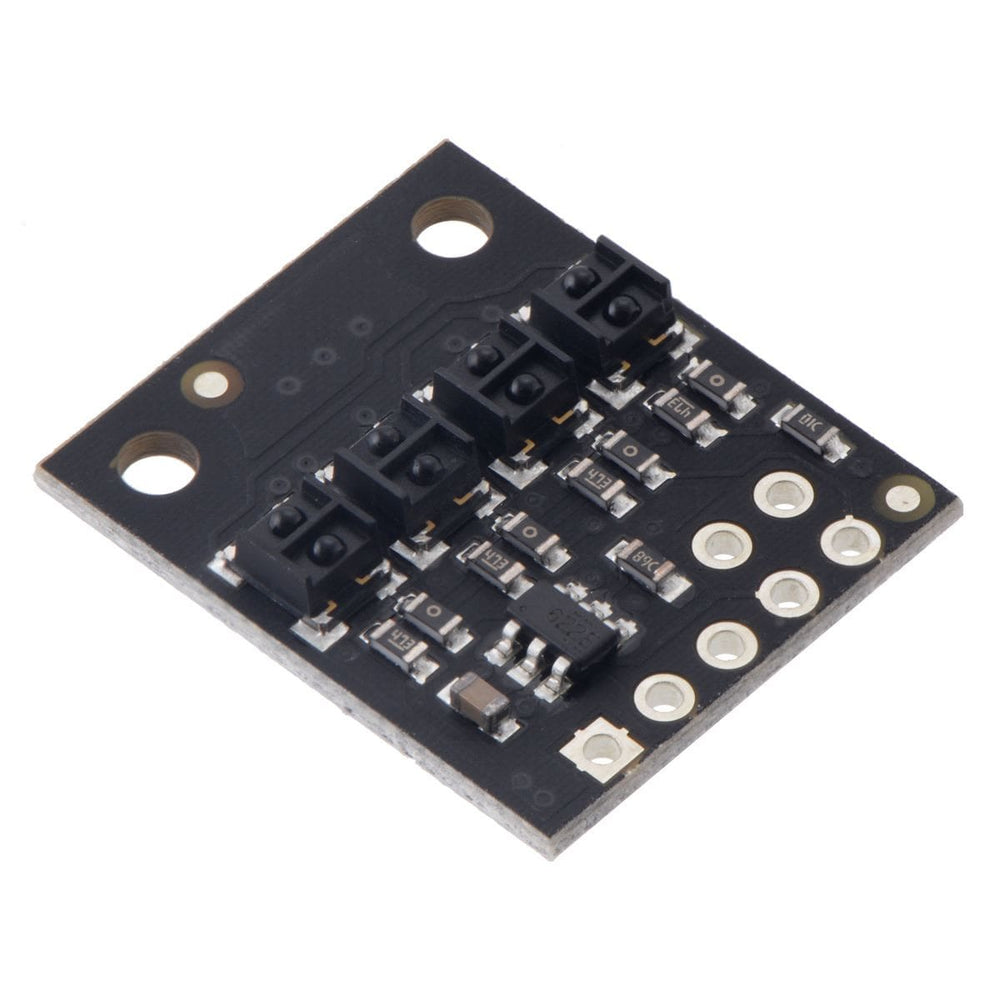
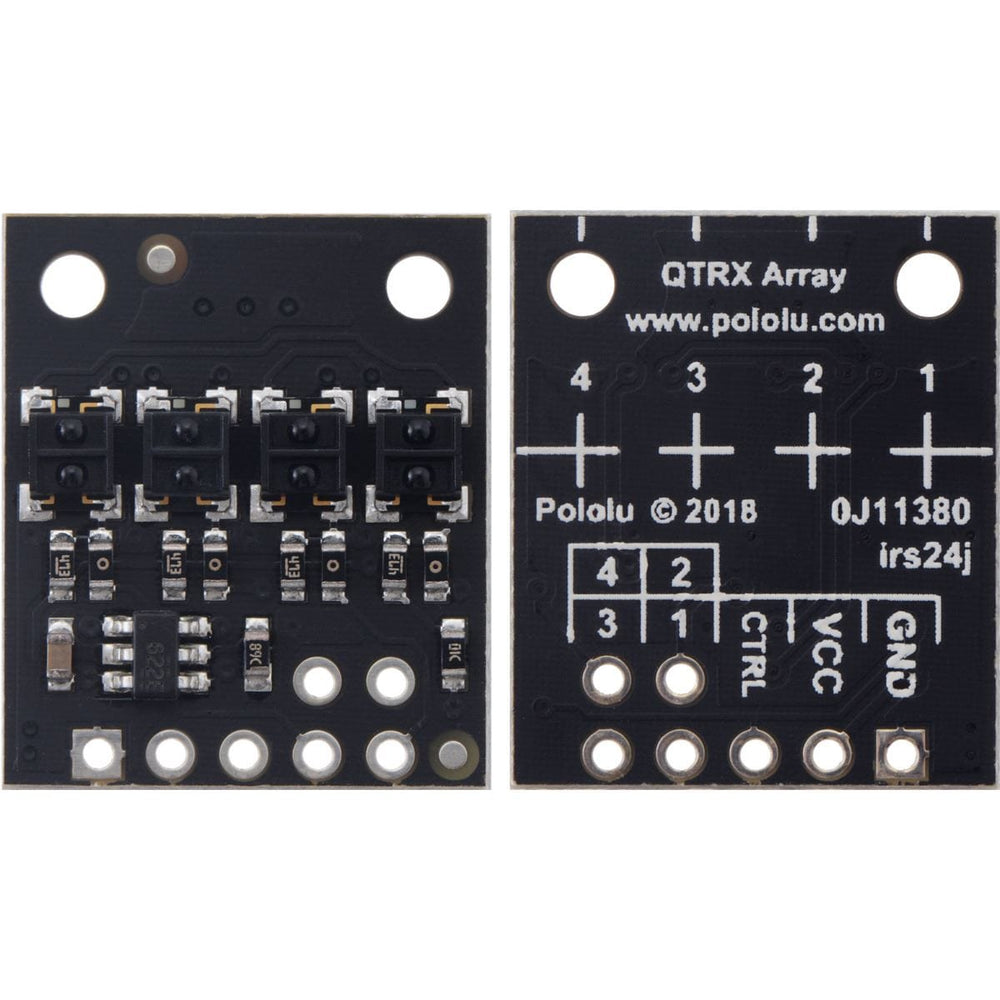
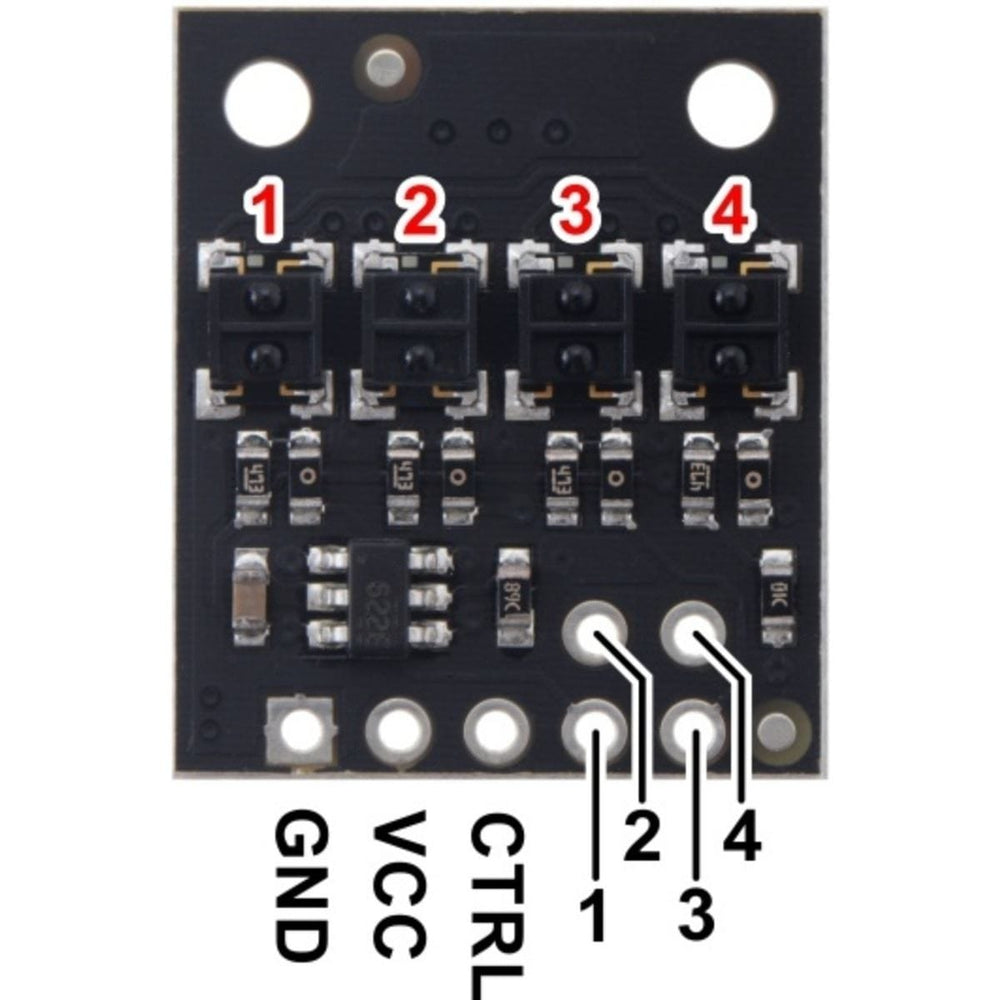
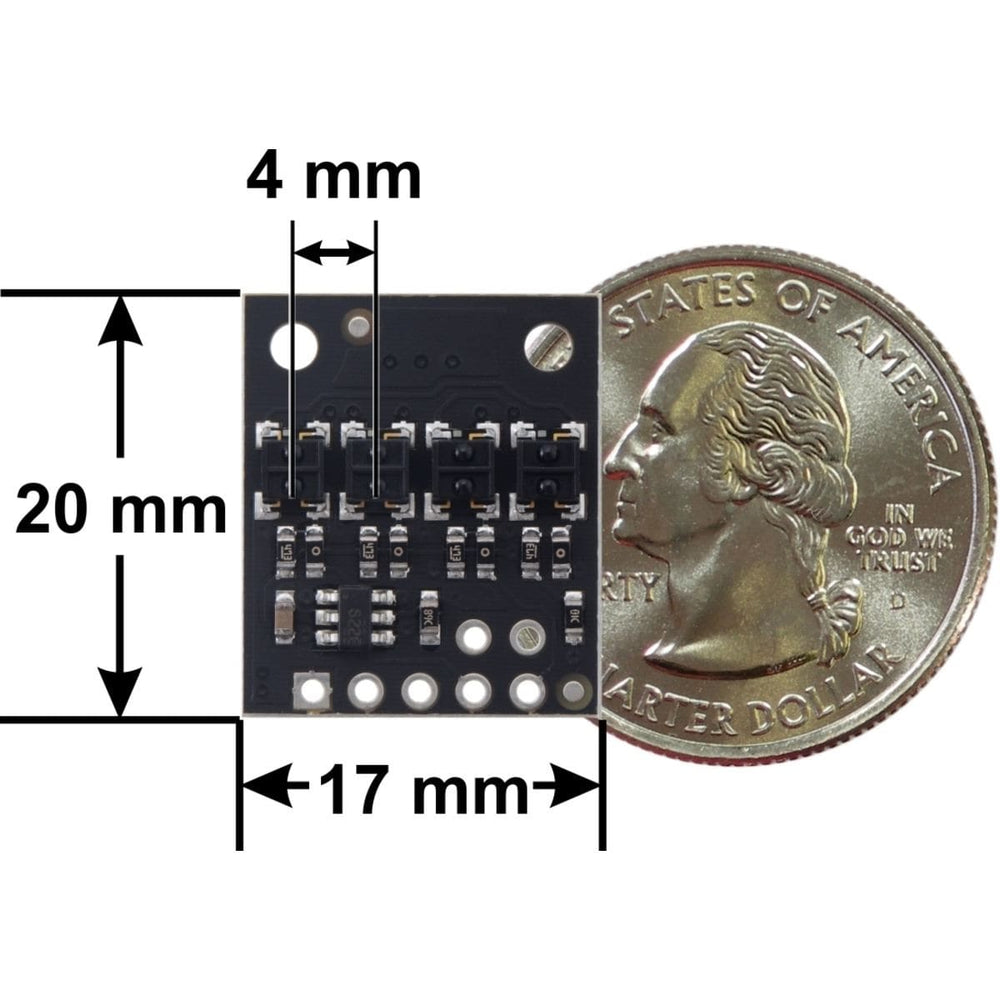
This Pololu IR LED/phototransistor pair is great for precisely identifying changes in reflectance (like line detection). It operates from 2.9 V to 5.5 V and offers dimmable brightness control independent of the supply voltage.
In general, the closer the object, the higher the contrast between light and dark readings, but high-reflectance objects are generally detectable out to around 40 mm. This version features a high-performance, low-current QTRX sensor with lenses.
This is the 4-channel, 4mm pitch analog output version. We also offer an RC (digital) output version.
Our Arduino library makes it easy to use these sensor modules with an Arduino or compatible controller by providing methods for controlling the emitters, calibrating the module, and reading the individual sensor values. It also has a method specifically for line-following applications to compute the location of the line under the array.
Note: Unlike most Pololu products, these sensor arrays do not ship with any headers or connectors included, so you will need to supply your own or solder wires directly to the board to use it.
These Pololu reflectance sensors feature a linear array of infrared emitter/phototransistor pair modules which makes them well suited for applications that require detection of changes in reflectivity. This change in reflectivity can be due to a colour change at a fixed distance, such as when sensing a black line on a white background, as well as due to a change in the distance to or presence of an object in front of the sensor. A variety of sensor counts and densities is available in the store so you can pick the ideal arrangement for your application.
Unlike our original QTR sensor modules, these units have integrated LED drivers that provide brightness control independent of the supply voltage, which can be anywhere from 2.9 V to 5.5 V, while enabling optional dimming to any of 32 possible brightness settings
For high-density (HD) modules with five or more sensors and medium-density (MD) modules with eleven or more sensors, there are separate controls for the odd-numbered and even-numbered LEDs, which gives you extra options for detecting light reflected at various angles. See the “Emitter control” section below for more information on using this feature.
Two different sensor options are available, denoted by “QTR” or “QTRX” in the product name. The “QTR” versions feature lower-cost sensor modules without lenses while the “QTRX” versions feature higher-performance sensor modules with lenses, which allow similar performance at a much lower IR LED current.
Each sensor option is available in two output types: an “A” version with analog voltage outputs between 0 V and VCC, and an “RC” version with outputs that can be read with a digital I/O line on a microcontroller by first setting the lines high and then releasing them and timing how long it takes them to read as low (typically anywhere from a few microseconds to a few milliseconds). The lower the output voltage or shorter the voltage decay time, the higher the reflectance.
Each sensor on the A versions outputs its reflectance measurement as an analog voltage that can range from 0 V when the reflectance is very strong to VCC when the reflectance is very weak. There are several ways you can interface with the analog output:
This last method will work if you are able to get high reflectance from your white surface but will probably fail if you have a lower-reflectance signal profile.
These reflectance sensor arrays maintain a constant current through their IR emitters, keeping the emitters’ brightness constant, independent of the supply voltage (2.9 V to 5.5 V). The emitters can be controlled with the board’s CTRL pins, and the details of the control depends on the array size and density:
Driving a CTRL pin low for at least 1 ms turns off the associated emitter LEDs, while driving it high (or allowing the board to pull it high) turns on the emitters with the board’s default (full) current, which is 30 mA for “QTR” versions and 3.5 mA for “QTRX” versions. For more advanced use, the CTRL pin can be pulsed low to cycle the associated emitters through 32 dimming levels.
To send a pulse, drive the CTRL pin low for at least 0.5 μs (but no more than 300 μs), then high for at least 0.5 μs; (it should remain high after the last pulse). Each pulse causes the driver to advance to the next dimming level, wrapping around to 100% after the lowest-current level. Each dimming level corresponds to a 3.33% reduction in current, except for the last three levels, which represent a 1.67% reduction, as shown in the table below. Note that turning the LEDs off with a >1 ms pulse and then back on resets them to full current.
For example, to reduce the emitter current to 50%, apply 15 low pulses to the CTRL pin and then keep it high after the last pulse.
|
Dimming Level (Pulses) |
Emitter Current (%) |
Dimming Level (Pulses) |
Emitter Current (%) |
| 0 | 100.00% | 16 | 46.67% |
| 1 | 96.67% | 17 | 43.33% |
| 2 | 93.33% | 18 | 40.00% |
| 3 | 90.00% | 19 | 36.67% |
| 4 | 86.67% | 20 | 33.33% |
| 5 | 83.33% | 21 | 30.00% |
| 6 | 80.00% | 22 | 26.67% |
| 7 | 76.67% | 23 | 23.33% |
| 8 | 73.33% | 24 | 20.00% |
| 9 | 70.00% | 25 | 16.67% |
| 10 | 66.67% | 26 | 13.33% |
| 11 | 63.33% | 27 | 10.00% |
| 12 | 60.00% | 28 | 6.67% |
| 13 | 56.67% | 29 | 5.00% |
| 14 | 53.33% | 30 | 3.33% |
| 15 | 50.00% | 31 | 1.67% |





